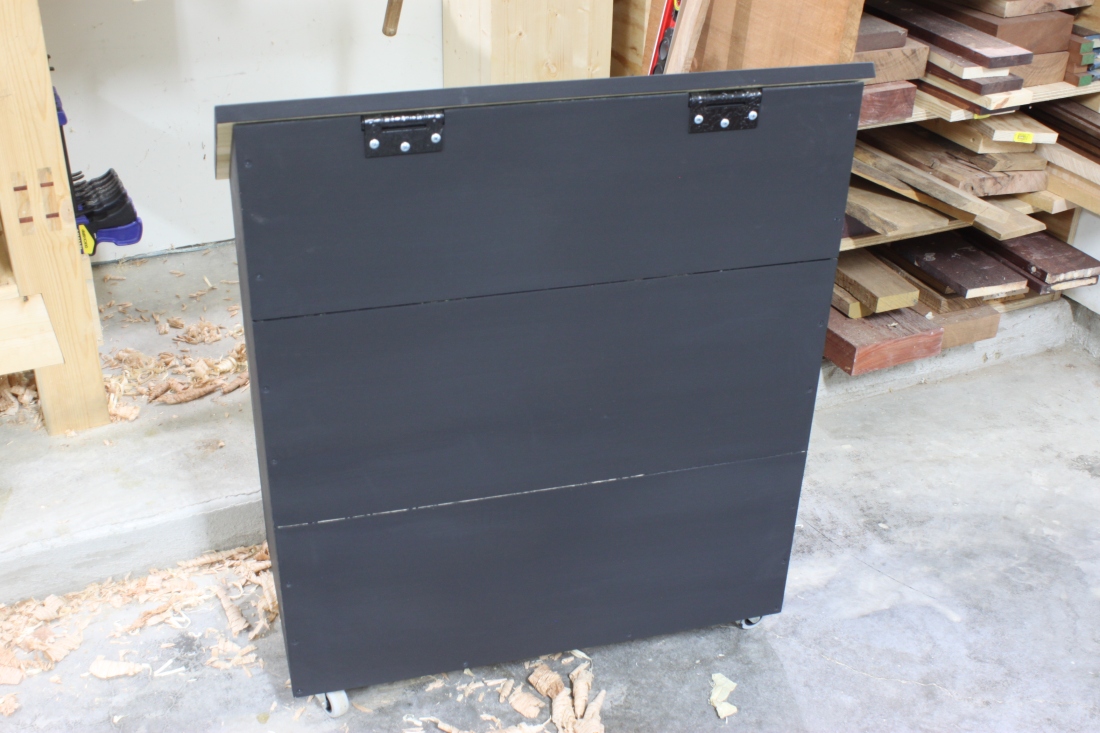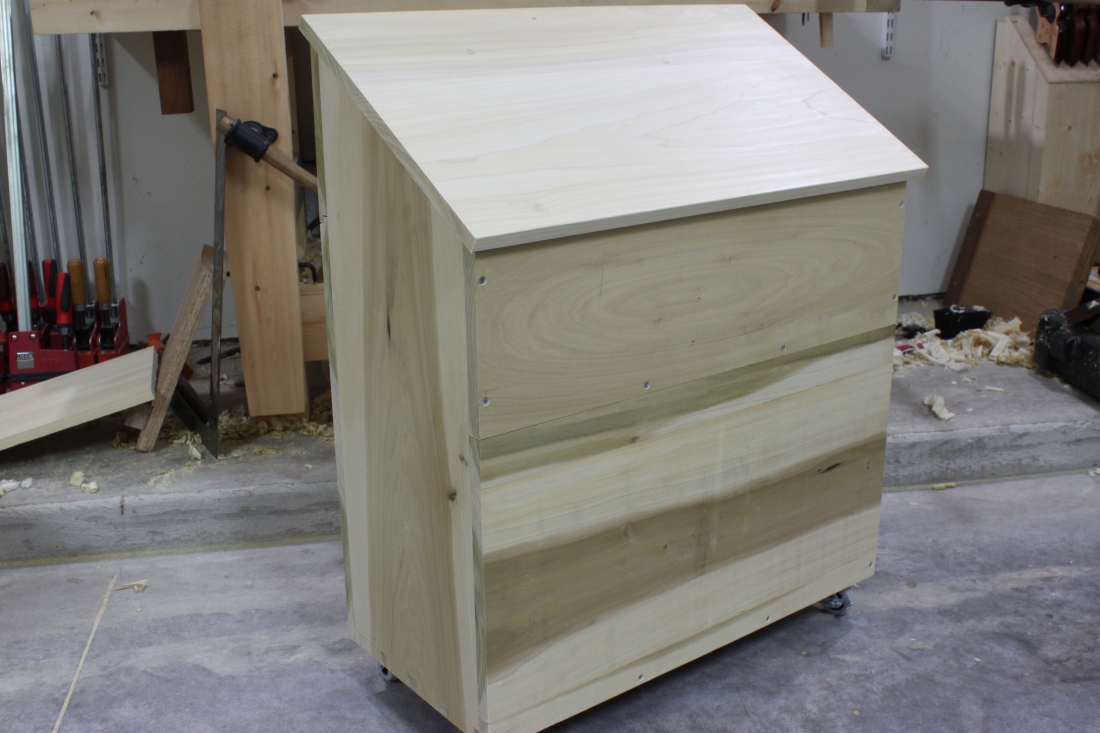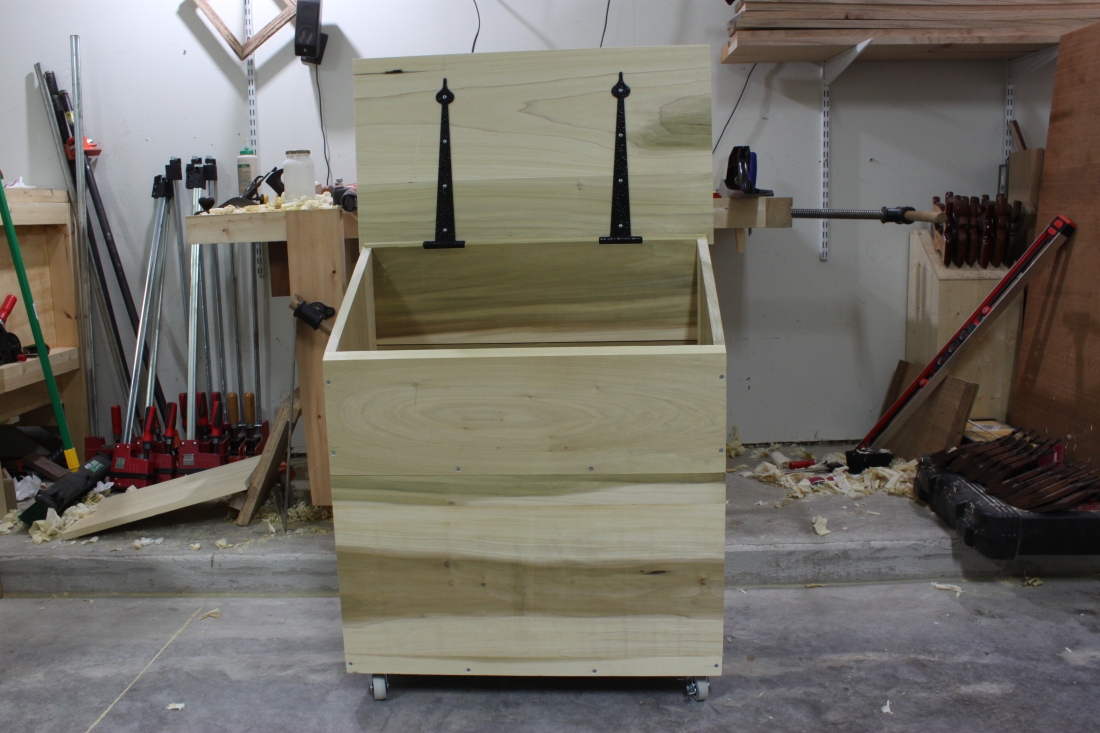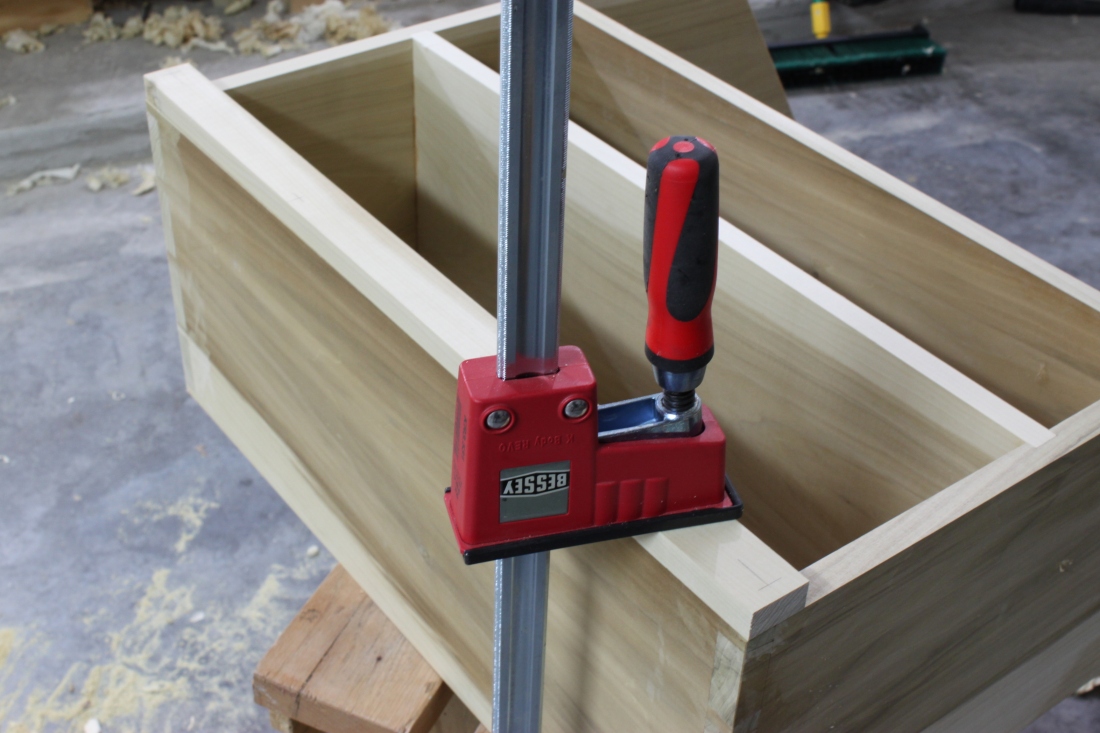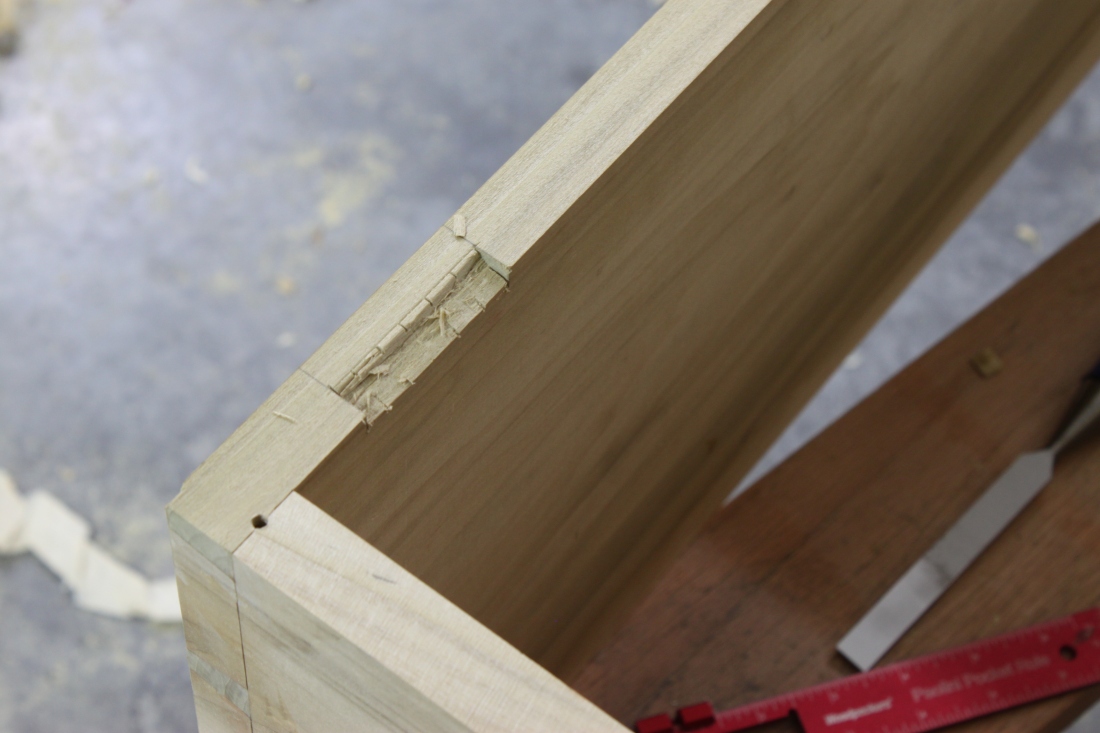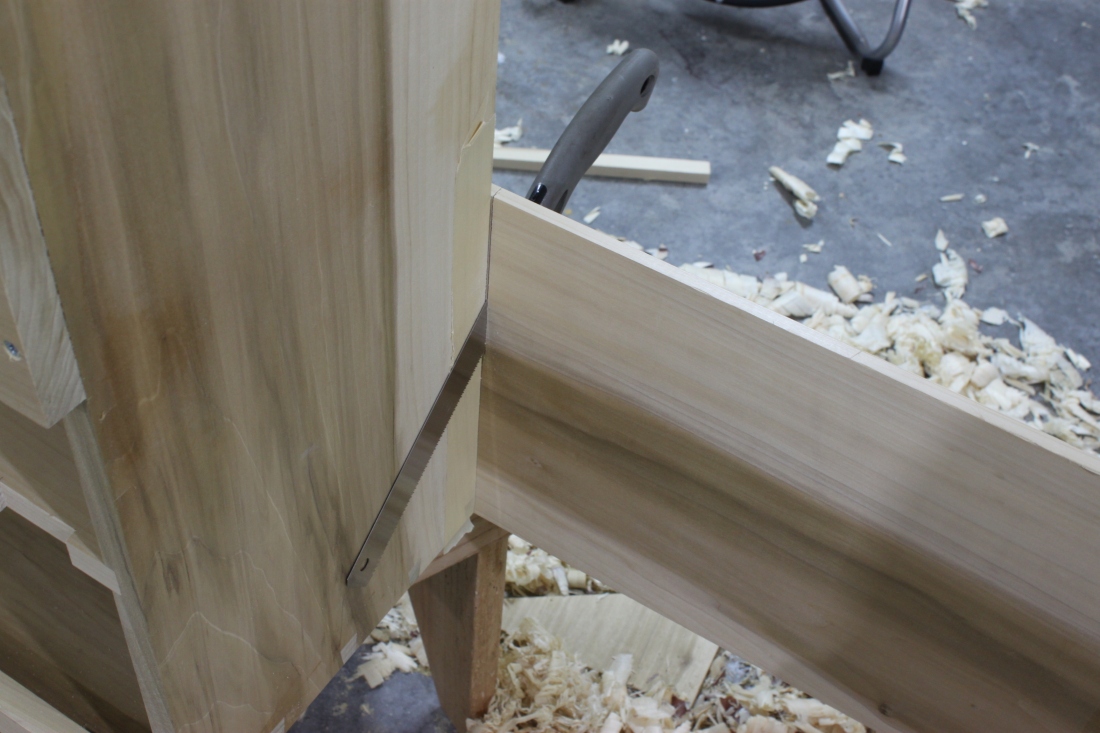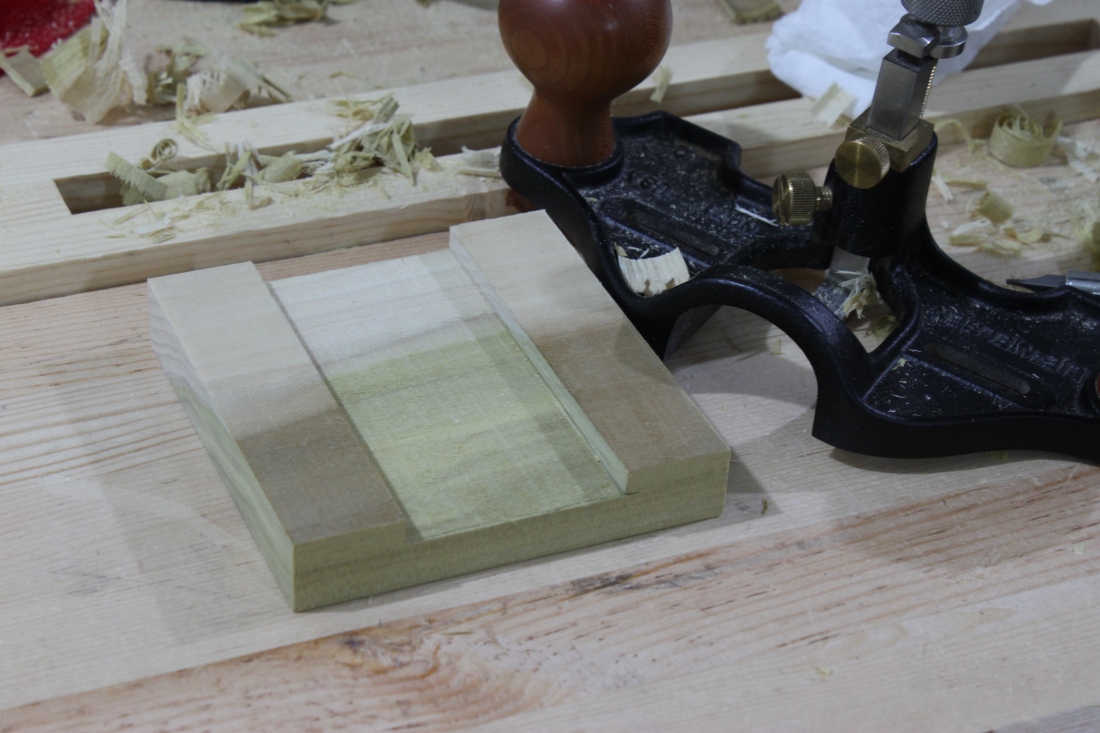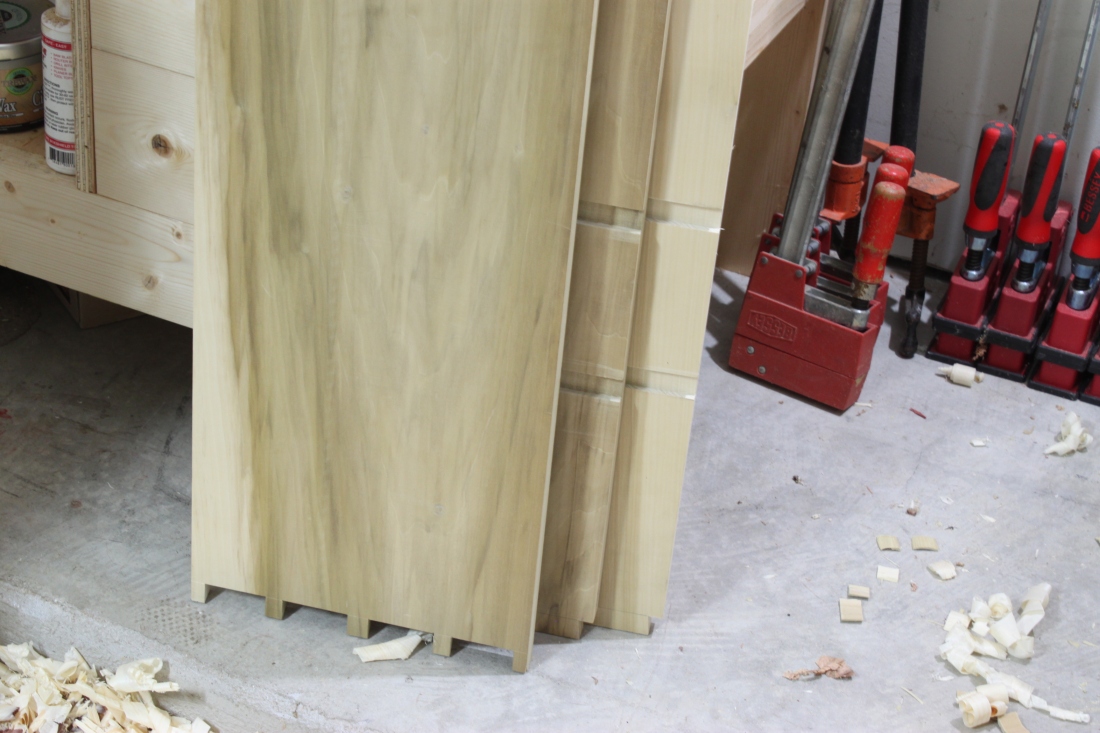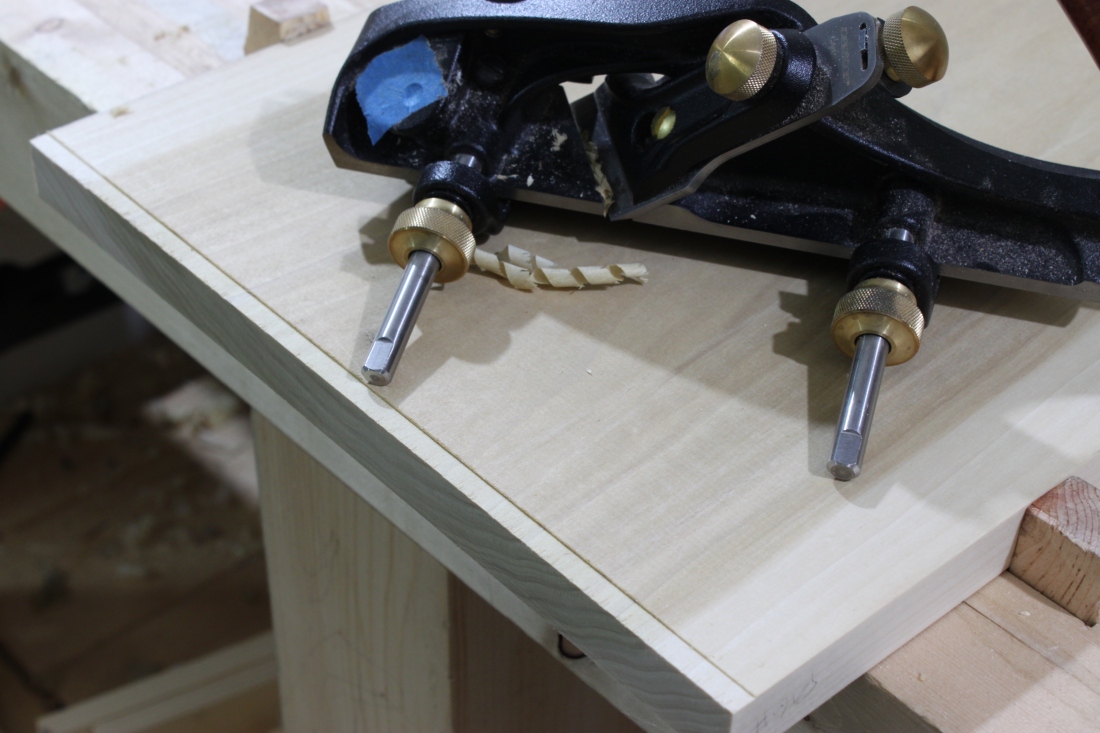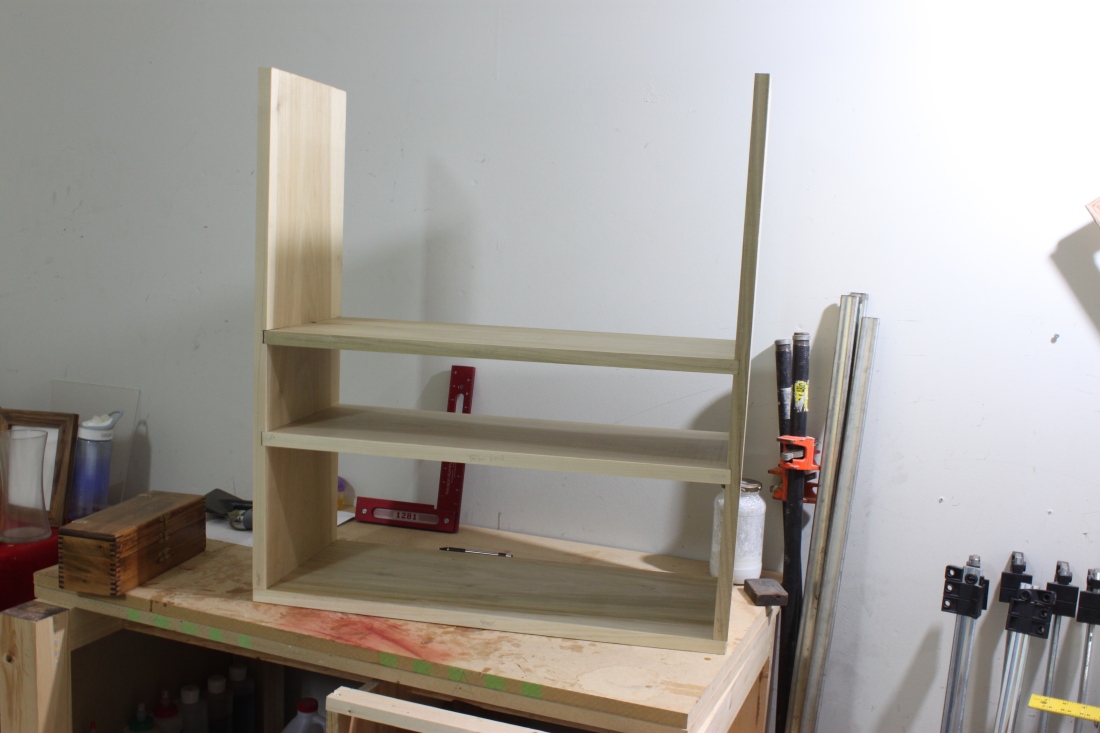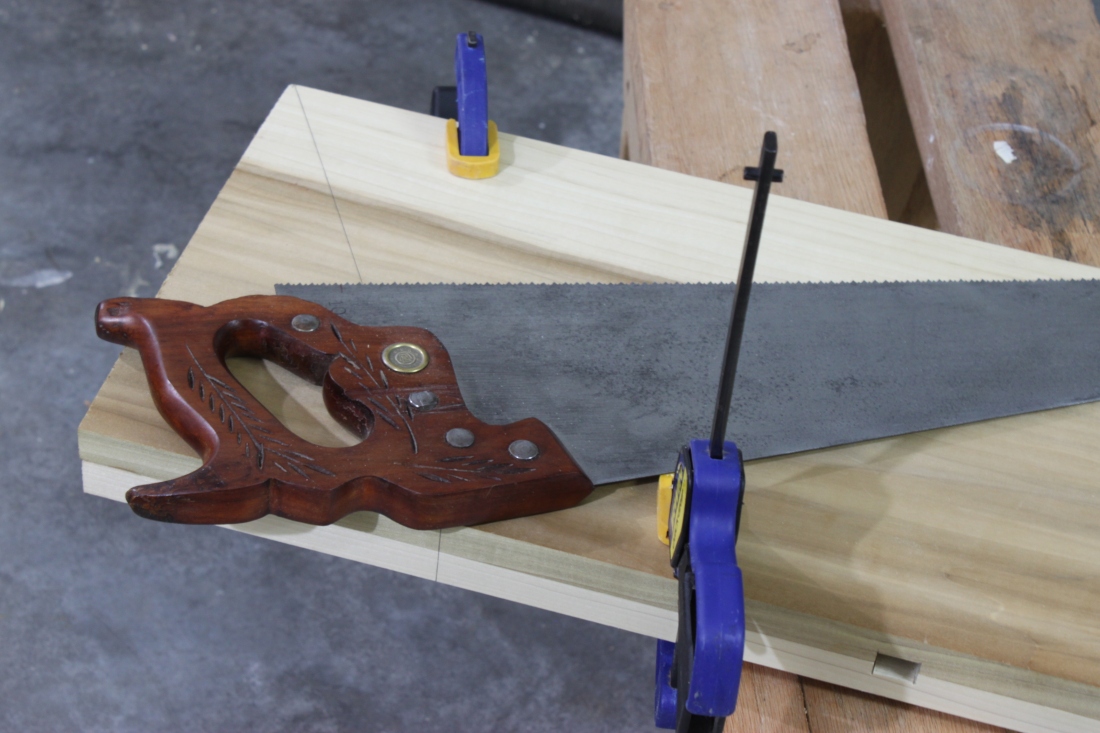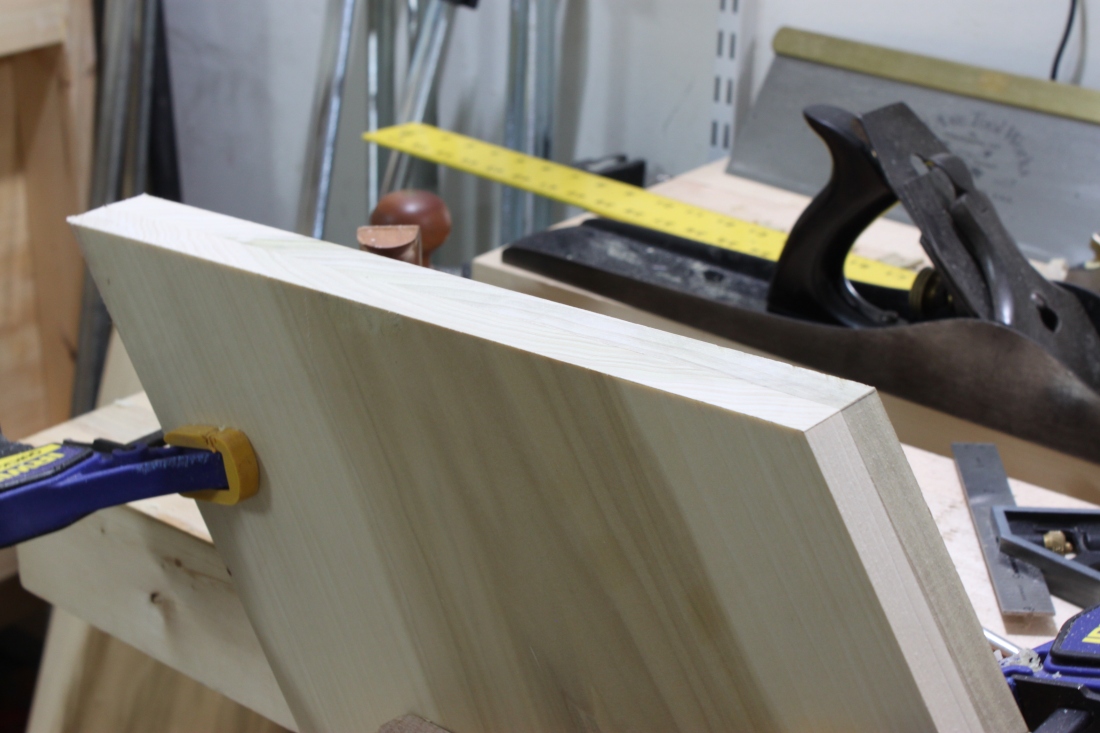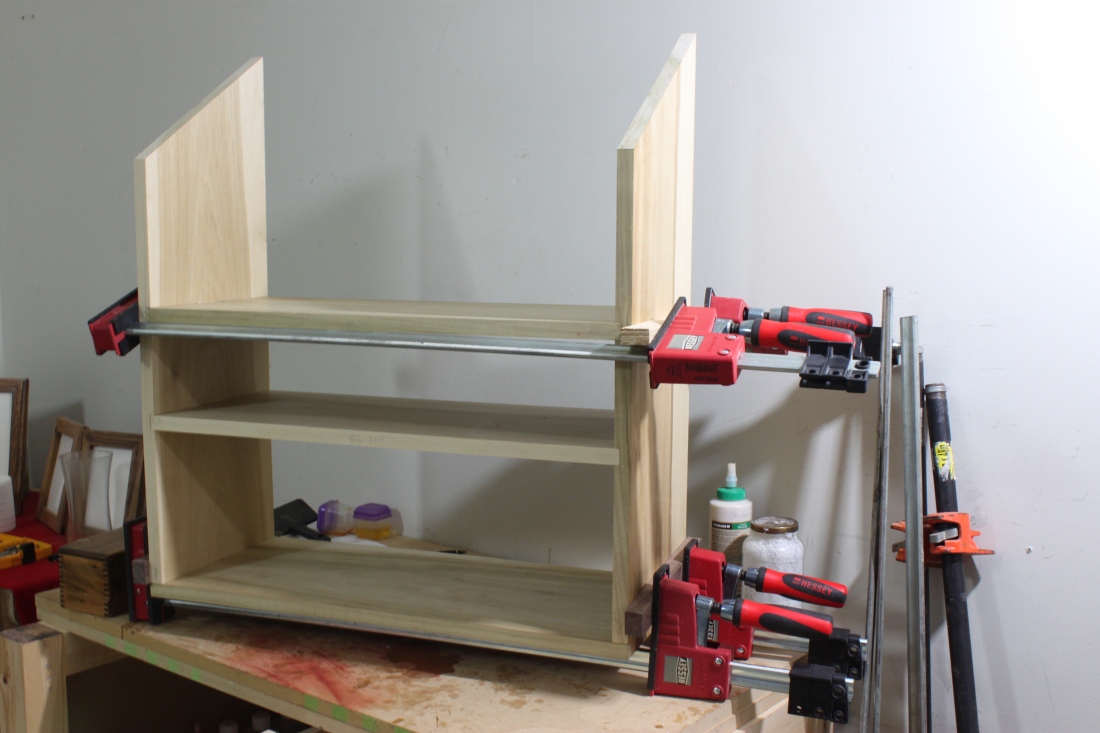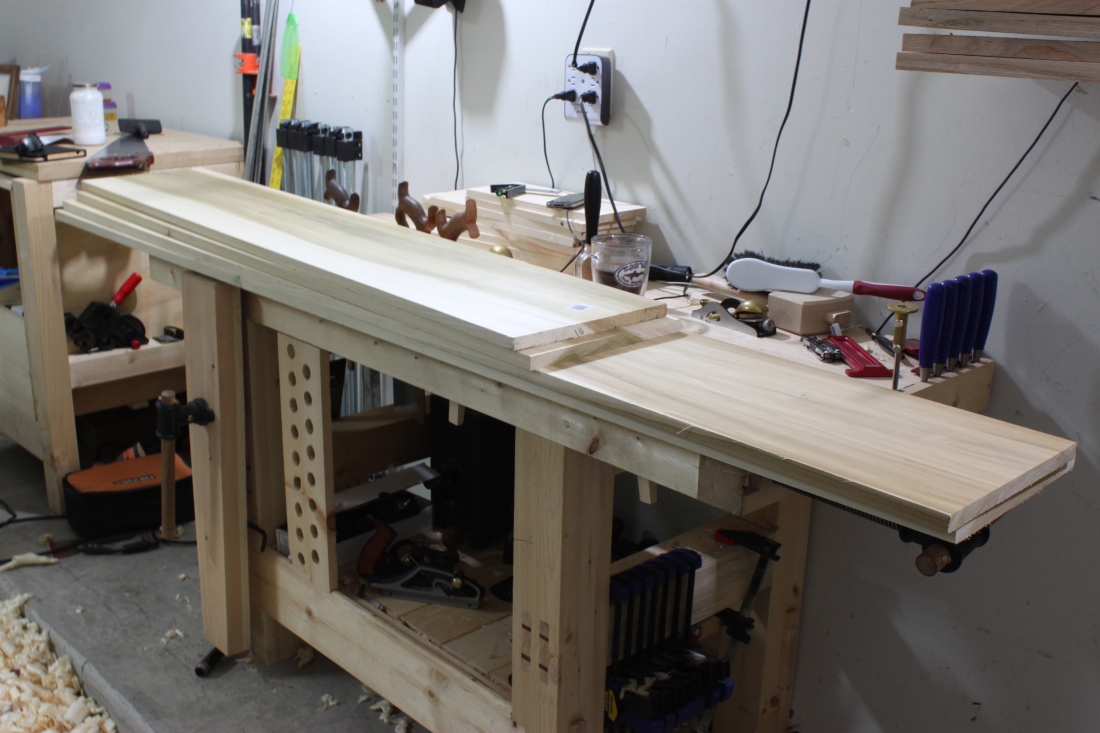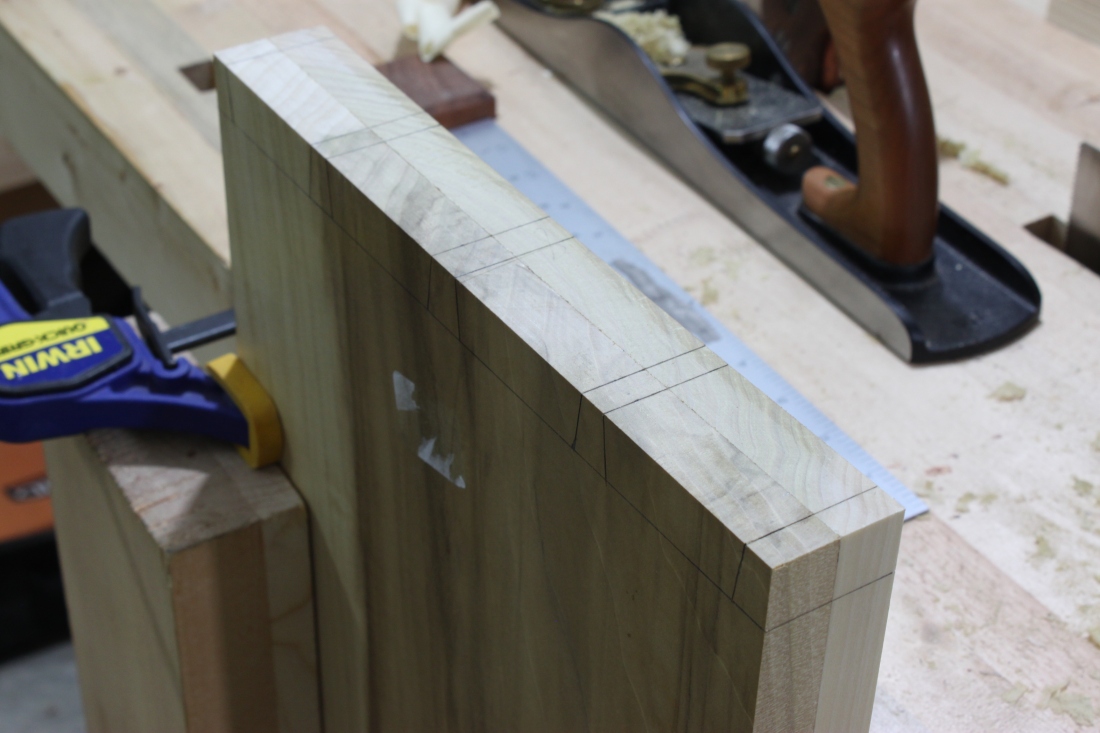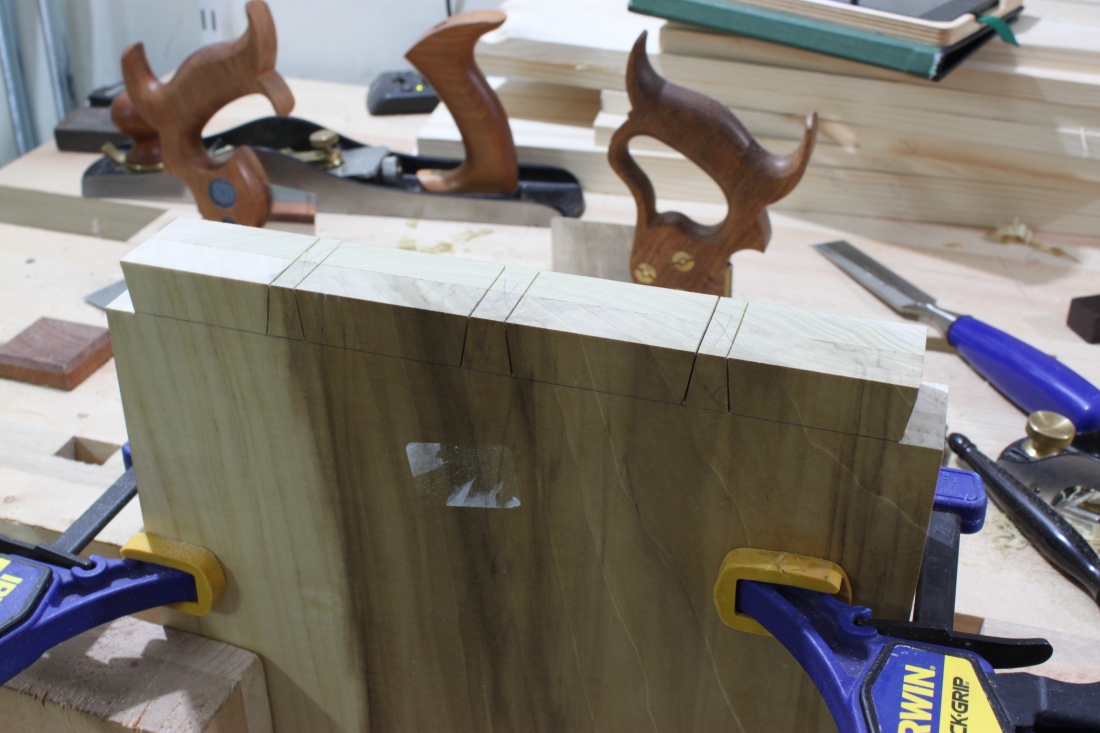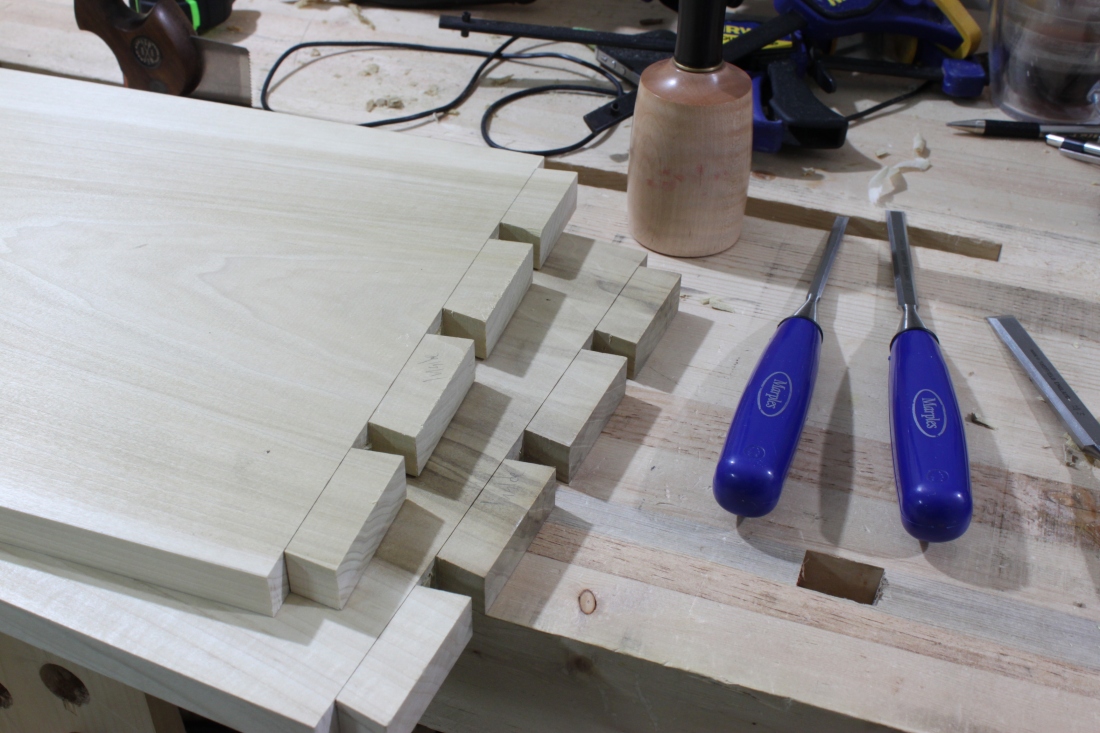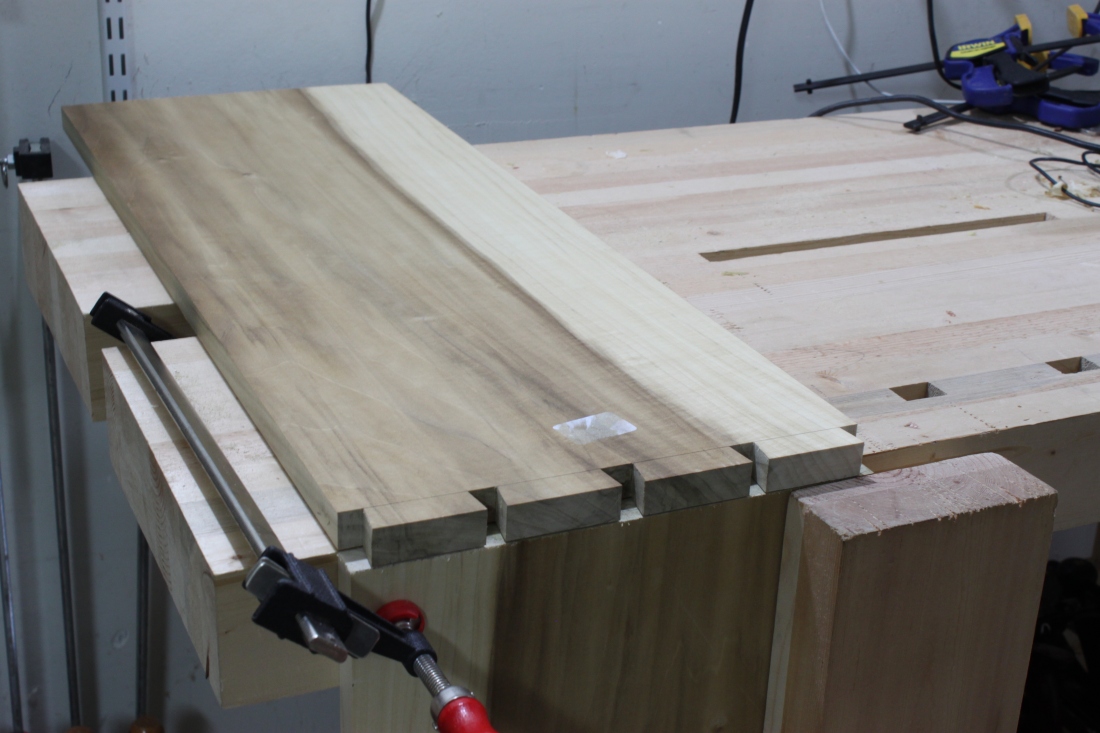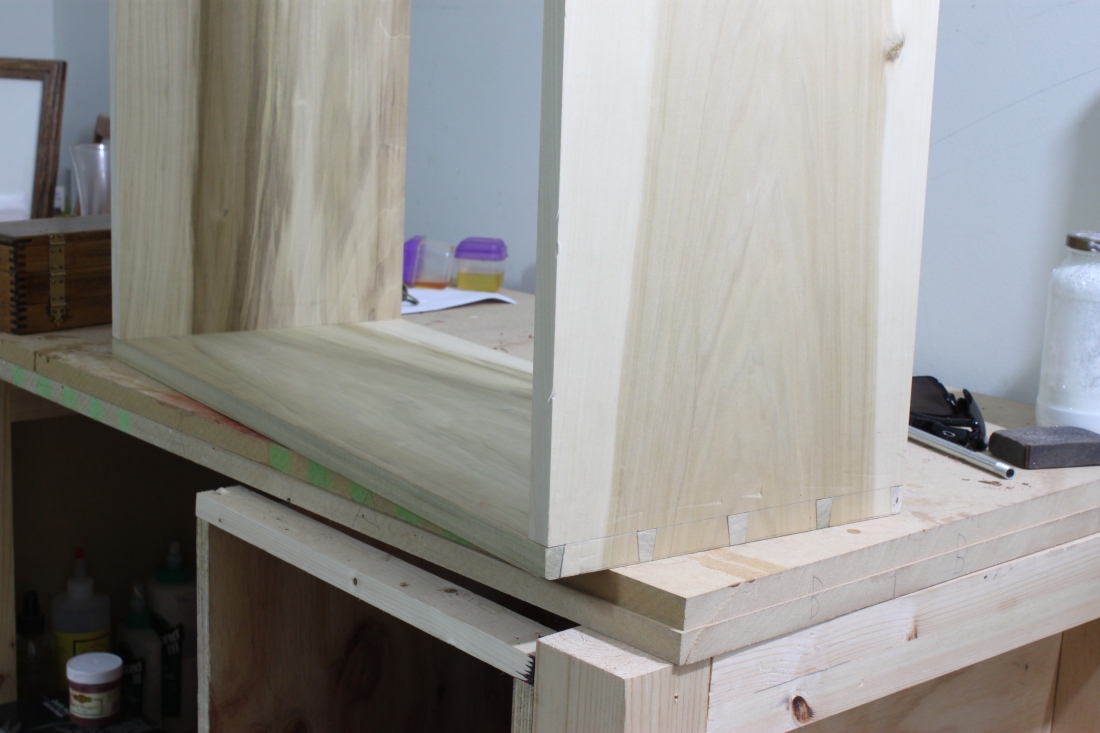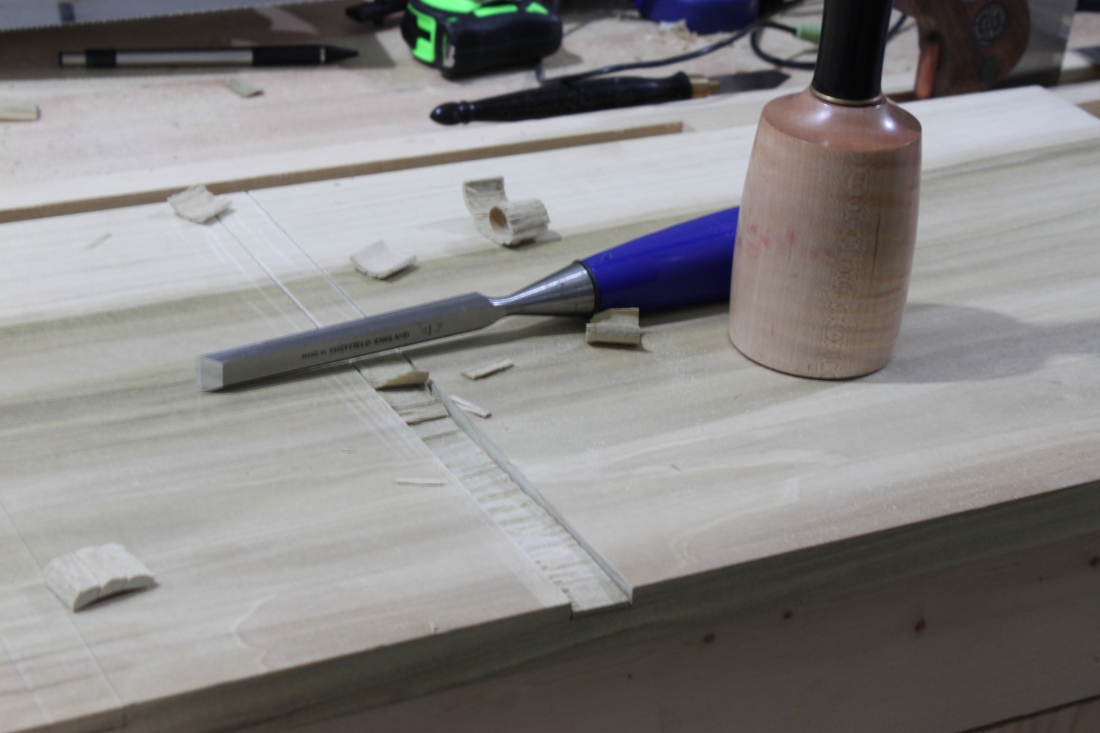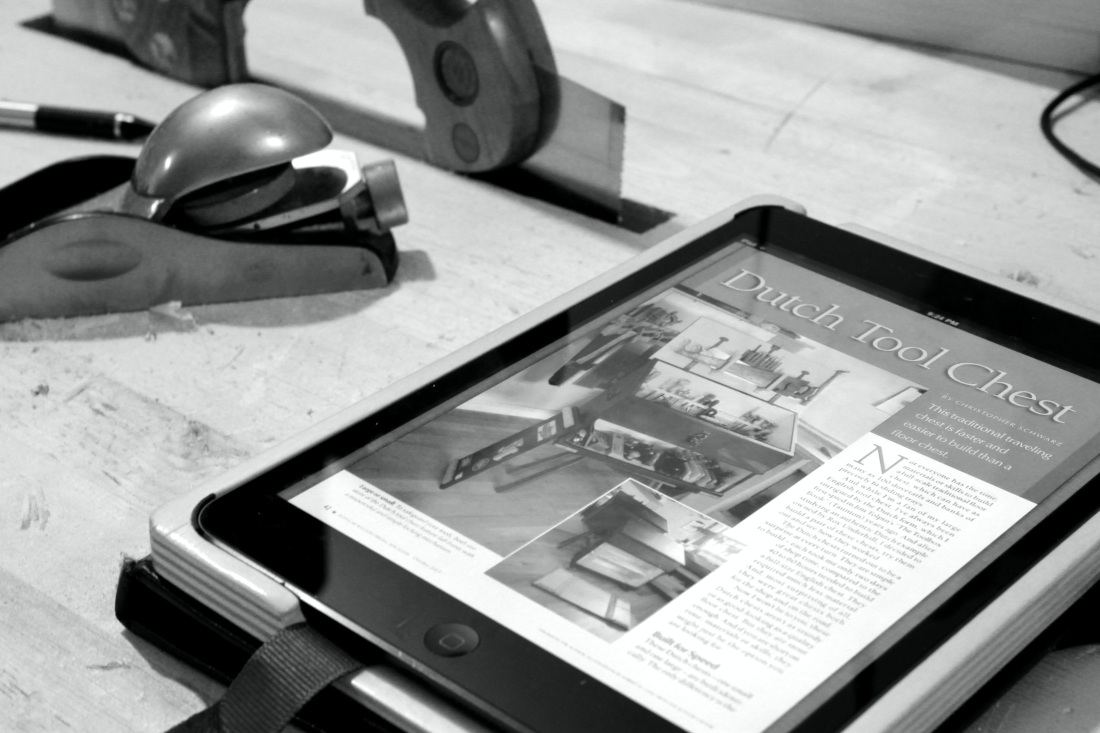I can finally call this project complete!
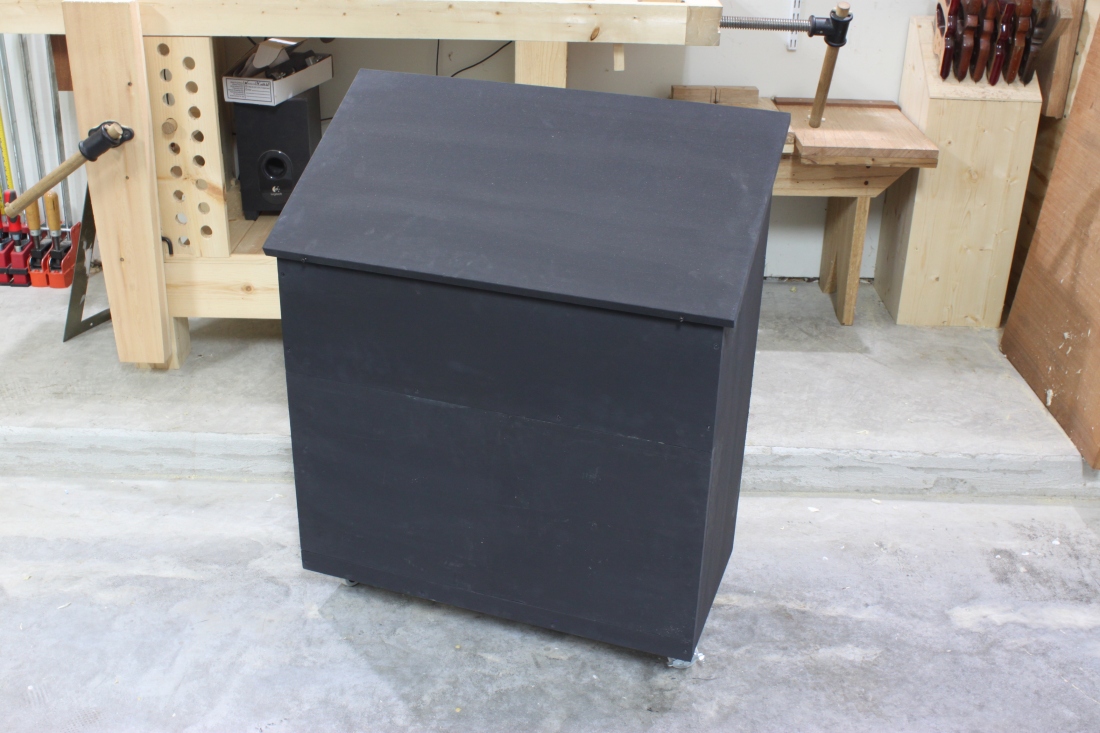 It took just as long to add all the details as it did to build the entire chest. I did give it my own personal touch that I haven’t seen elsewhere yet.
It took just as long to add all the details as it did to build the entire chest. I did give it my own personal touch that I haven’t seen elsewhere yet.
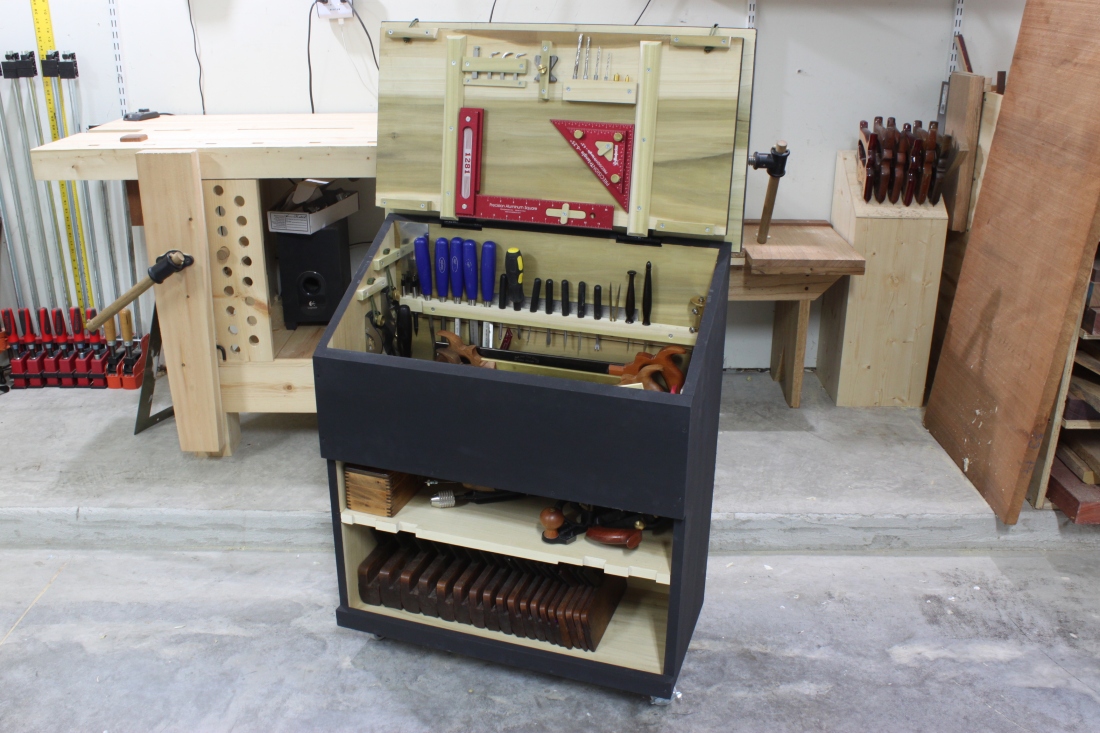 The front-fall kept getting in my way if I didn’t have it sitting on my bench. I had it leaning against the chest but kept knocking it over so I wanted to come up with a way to store it. Initially I thought of just attaching it to the back but as I was brainstorming I came up with an even better idea. Use that prime real estate for more tool holding.
The front-fall kept getting in my way if I didn’t have it sitting on my bench. I had it leaning against the chest but kept knocking it over so I wanted to come up with a way to store it. Initially I thought of just attaching it to the back but as I was brainstorming I came up with an even better idea. Use that prime real estate for more tool holding.
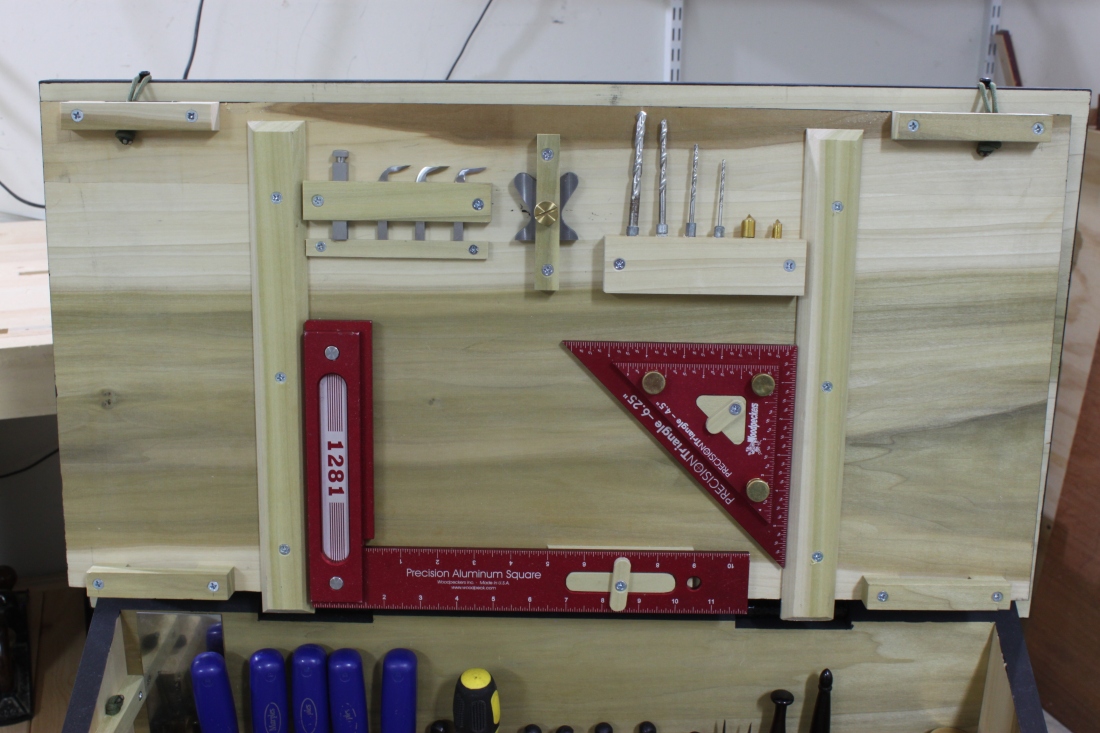 Other than the square I consider these my lesser used tools. I didn’t want them in the bottom of a drawer somewhere so what better place to store them. I used some 550 cord threaded through the catches and hanging on a screw in the lid.
Other than the square I consider these my lesser used tools. I didn’t want them in the bottom of a drawer somewhere so what better place to store them. I used some 550 cord threaded through the catches and hanging on a screw in the lid.
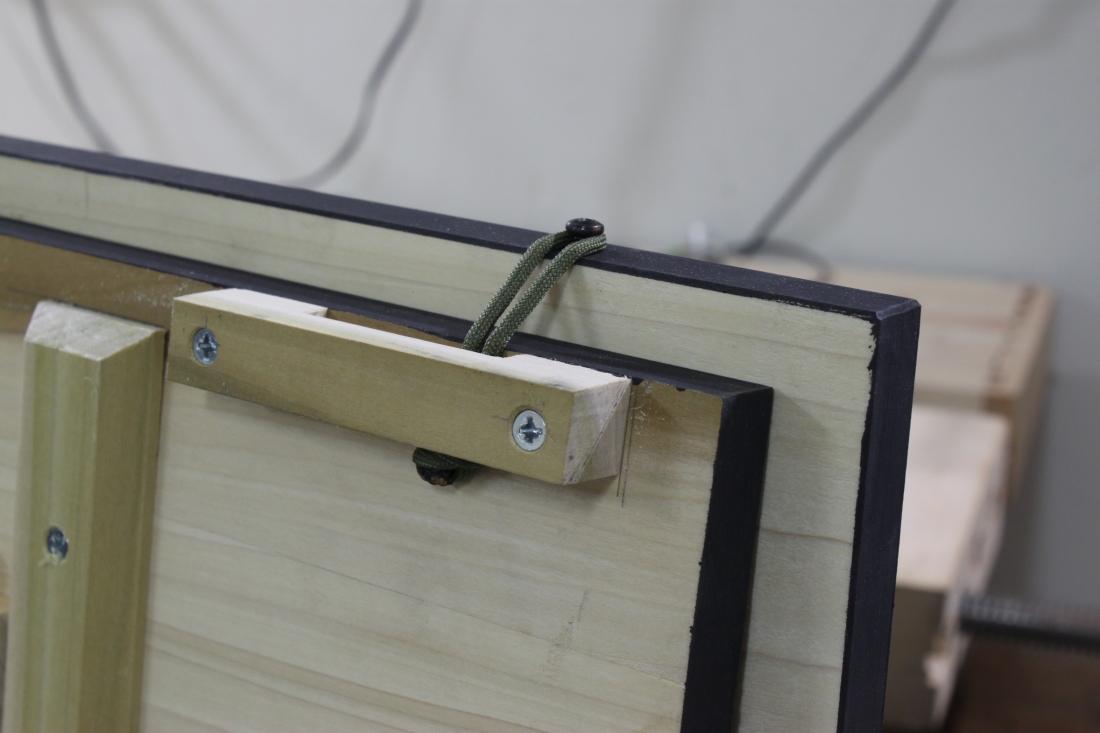 It holds steady but I wouldn’t move the chest without taking it off or at least holding it during the move. Now for the best part; the interior.
It holds steady but I wouldn’t move the chest without taking it off or at least holding it during the move. Now for the best part; the interior.
And from the other side…
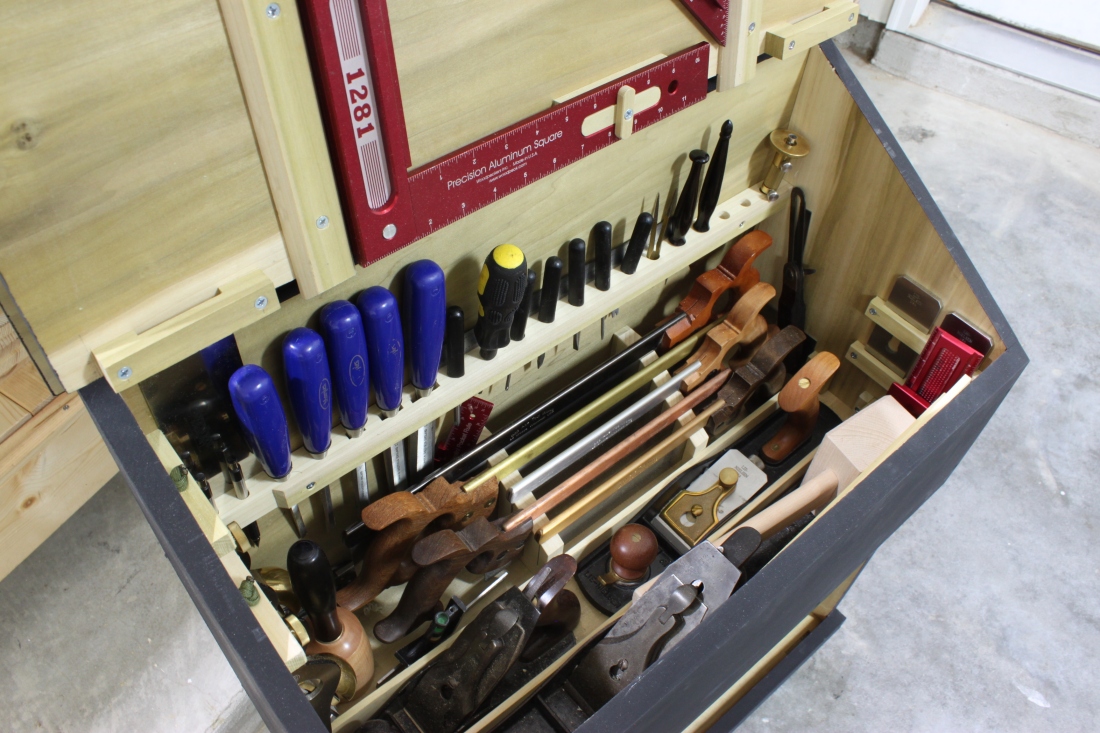 Before you mention it, yes I know I have a saw problem. I blame Mark Harrell.
Before you mention it, yes I know I have a saw problem. I blame Mark Harrell.
The mistake that I made in making the top compartment deeper by making the upper shelf shorter worked out perfect for me. I really used that extra 1-1/2″ in the top area to maximize storage.
Last but not least the bottom.
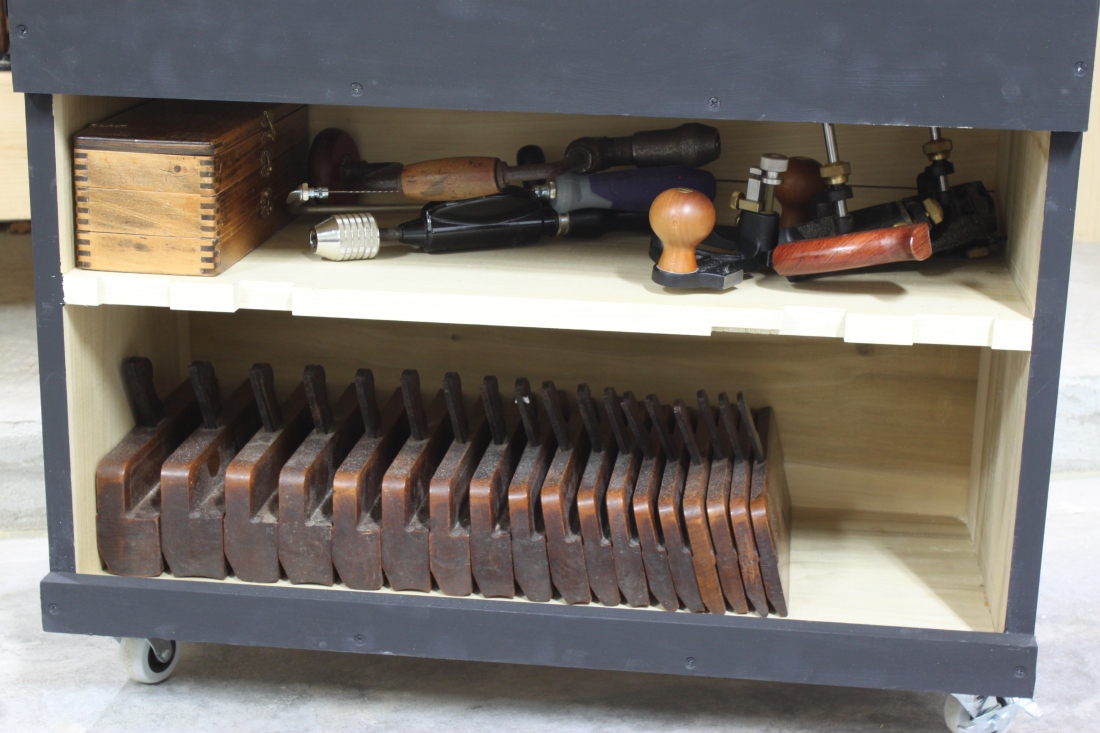 Notice I had to extend the notch next to where the right batten rests. This was to make room for the square. There wasn’t enough vertical clearance even after I dropped the square below the bottom of the front-fall.
Notice I had to extend the notch next to where the right batten rests. This was to make room for the square. There wasn’t enough vertical clearance even after I dropped the square below the bottom of the front-fall.
I’d have to say that this project was more rewarding to finish than my bench. All my tools now have a home and are protected. Total time was about two weeks of nights and Sunday’s and cost was in the ballpark of $200 all from Home Depot.
Most surprising is how much it holds. Here’s s a rundown:
FRONT FALL
- router plane adapter
- 3 small router plane blades
- router plane fence
- 4 drill bits
- 2 counter sinks
- 12″ square
- triangle set
TOOL RACK
- 2 mechanical pencils
- card scraper (behind pencils)
- 5 bench chisels
- 3 phillips screw drivers
- 3 slotted screw drivers
- 12″ ruler (behind screw drivers)
- dividers
- awl
- making knife
- marking gauge
TOP COMPARTMENT
- low angle block plane
- rabbet block plane
- mallet
- leatherman knife
- 12″ measuring tape
- pocket rule
- mallet
- 6″ combo square
- 16″ tenon saw
- 14″ sash saw
- 10″ carcase saw
- 12″ hybrid dovetail saw
- 10″ dovetail saw
- #4 plane
- low angle jack plane
- #7 plane
- another mallet
- bevel gauge
- protractor
- low angle toothed blade
- low angle blade (higher angle)
- 3″ t square
- 6″ t square
BOTTOM COMPARTMENT
- auger bit set
- brace
- coping saw
- hand drill
- router plane
- skewed rabbet plance
- half set even hollows and rounds
I think that about covers it. Thanks for following along.
(edit) As requested, here is a picture of the rear of the chest.

